Geology Final Exam
1/89
There's no tags or description
Looks like no tags are added yet.
Name | Mastery | Learn | Test | Matching | Spaced |
|---|
No study sessions yet.
90 Terms
Sedimentary rock
Rock formed by the accumulation, burial, and lithification of sediment derived from the earth surface.
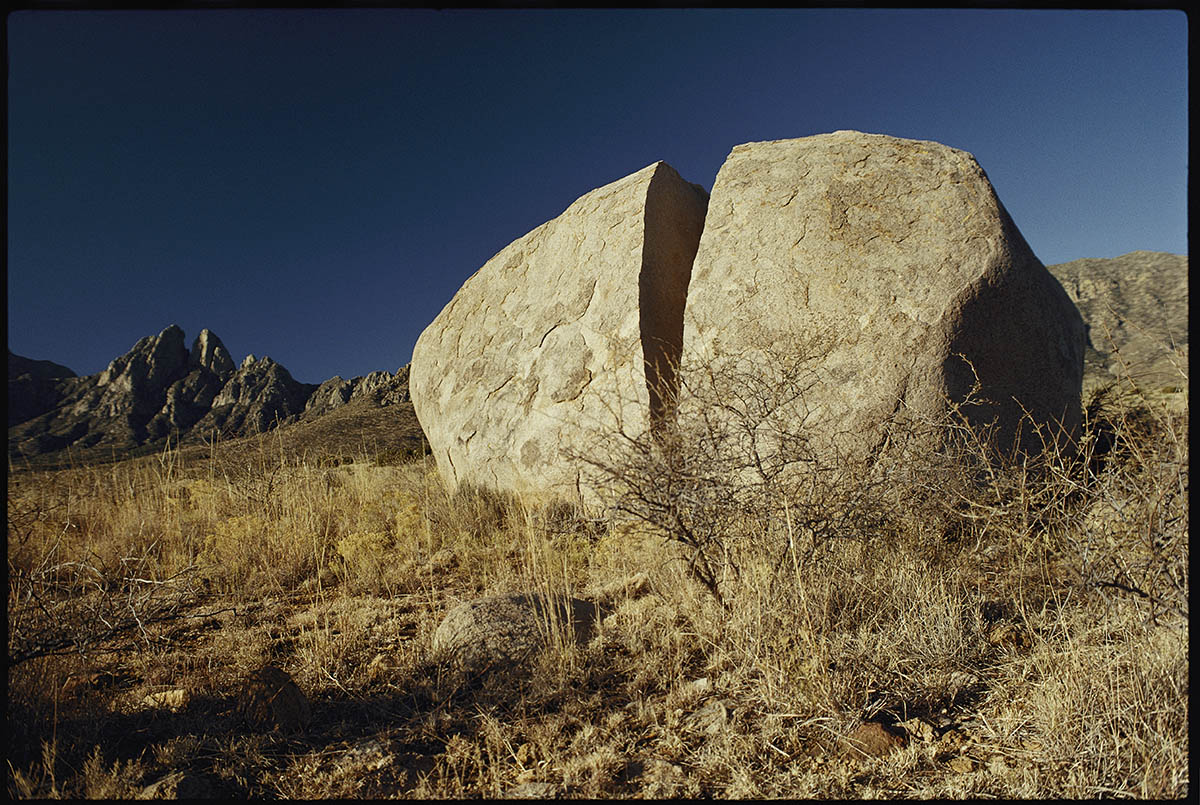
Physical (mechanical) weathering
Disintegration of rock into smaller pieces without changing its chemical composition.
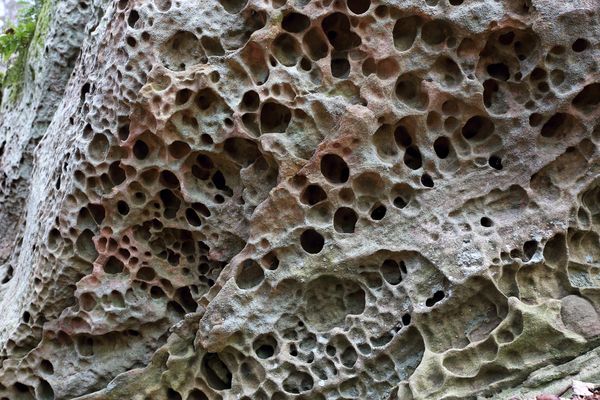
Chemical weathering
Decomposition of rock through chemical reactions that alter or dissolve minerals.
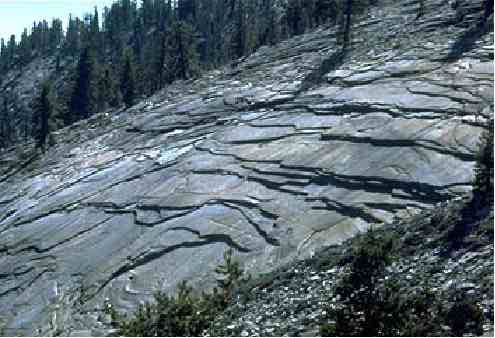
Exfoliation joint
Curved fracture produced by pressure release that causes rock sheets to peel away from an outcrop. (like an onion)
Erosion
Removal and transport of weathered material by falling from their own gravity( wind, water, ice, or gravity)
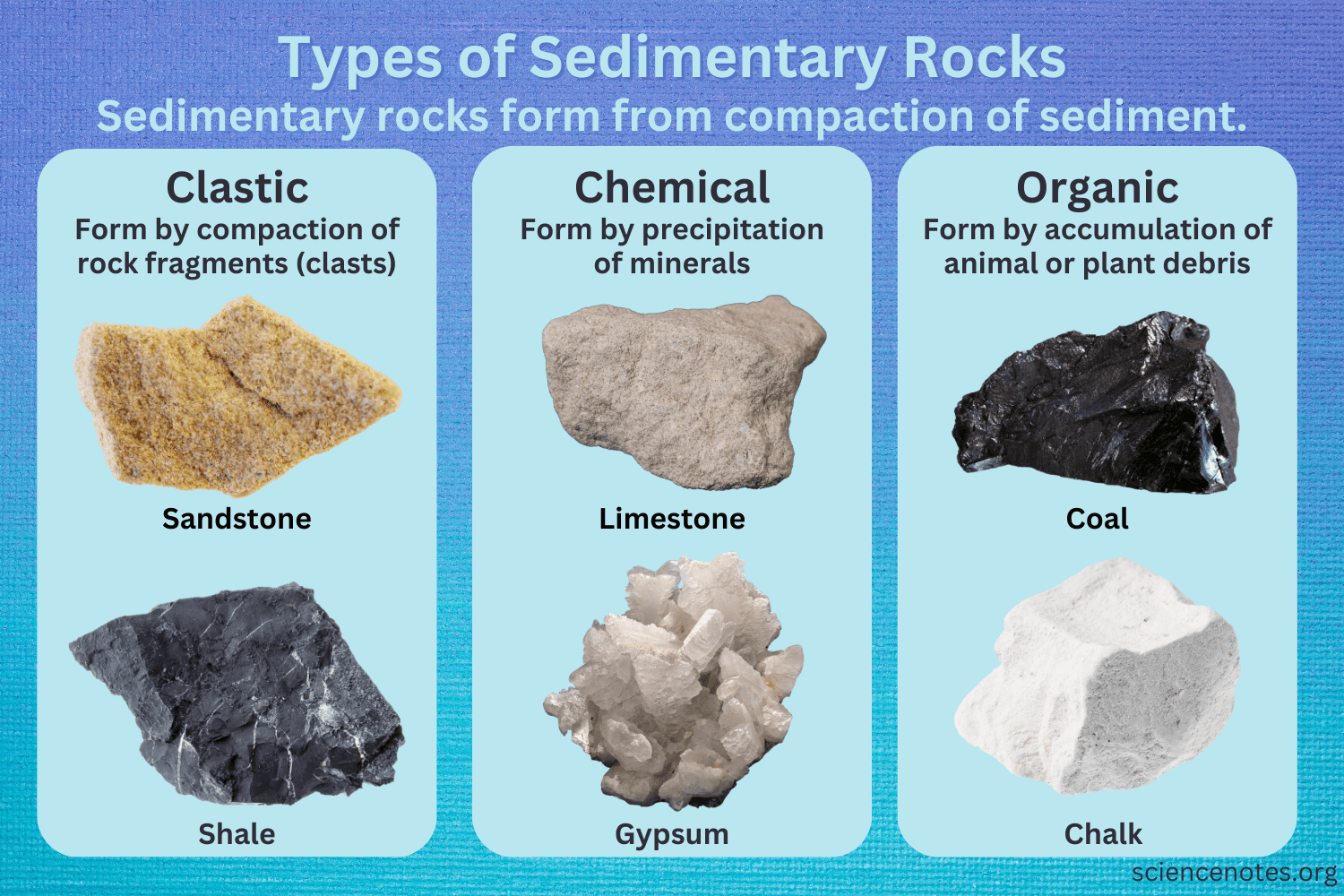
Clastic (detrital) sedimentary rock
Rock composed of solid fragments (clasts) of pre-existing rocks cemented together.
Non-Clastic sedimentary rock
Rock formed from precipitation of minerals from solution or from organic material, rather than from fragments of other rocks.
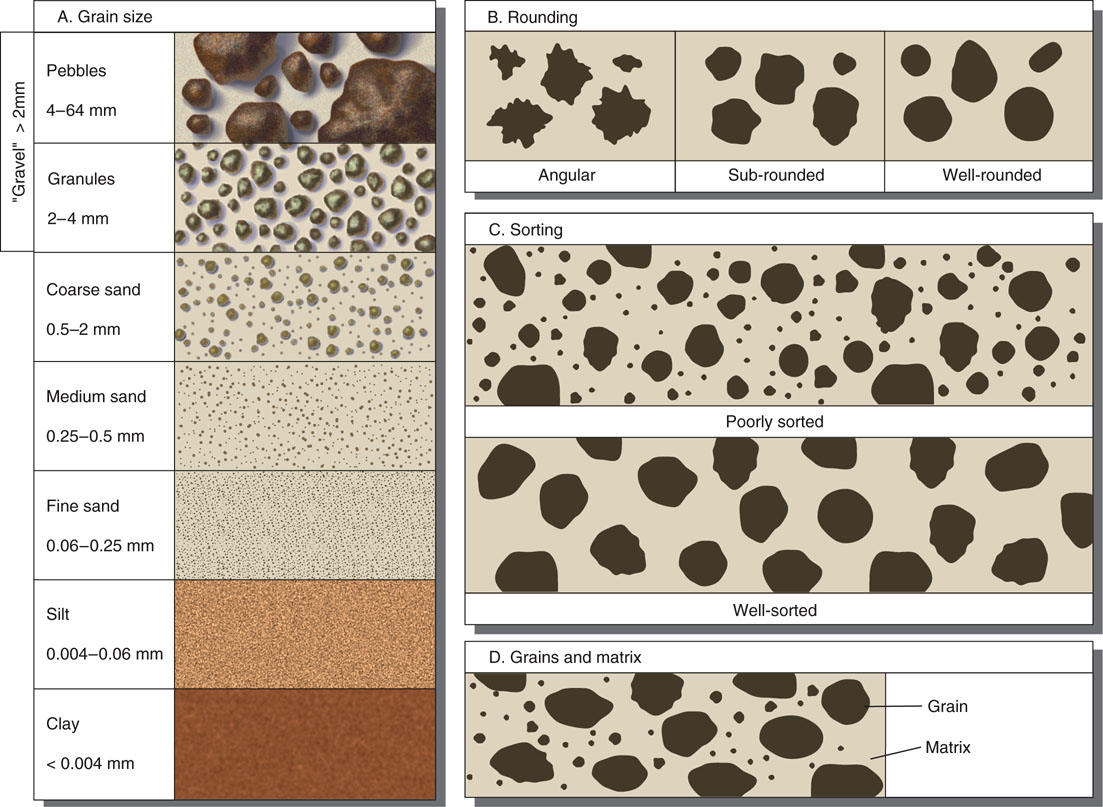
Grain size
Diameter of sediment particles; basis for naming clastic rocks.
Gravel
Sediment particles larger than 2 mm in diameter.
Sand
Sediment particles between 1⁄16 mm and 2 mm in diameter.
Mud
Sediment particles smaller than 1⁄16 mm (silt and clay).
Grain shape
Degree of rounding of clasts; rounded grains indicate longer transport, angular grains shorter transport.
Sorting
Uniformity of grain sizes within a sediment or rock; well-sorted means similar sizes.
Sediment maturity
Extent to which sediment is well-sorted, rounded, and quartz-rich, reflecting long transport and reworking.
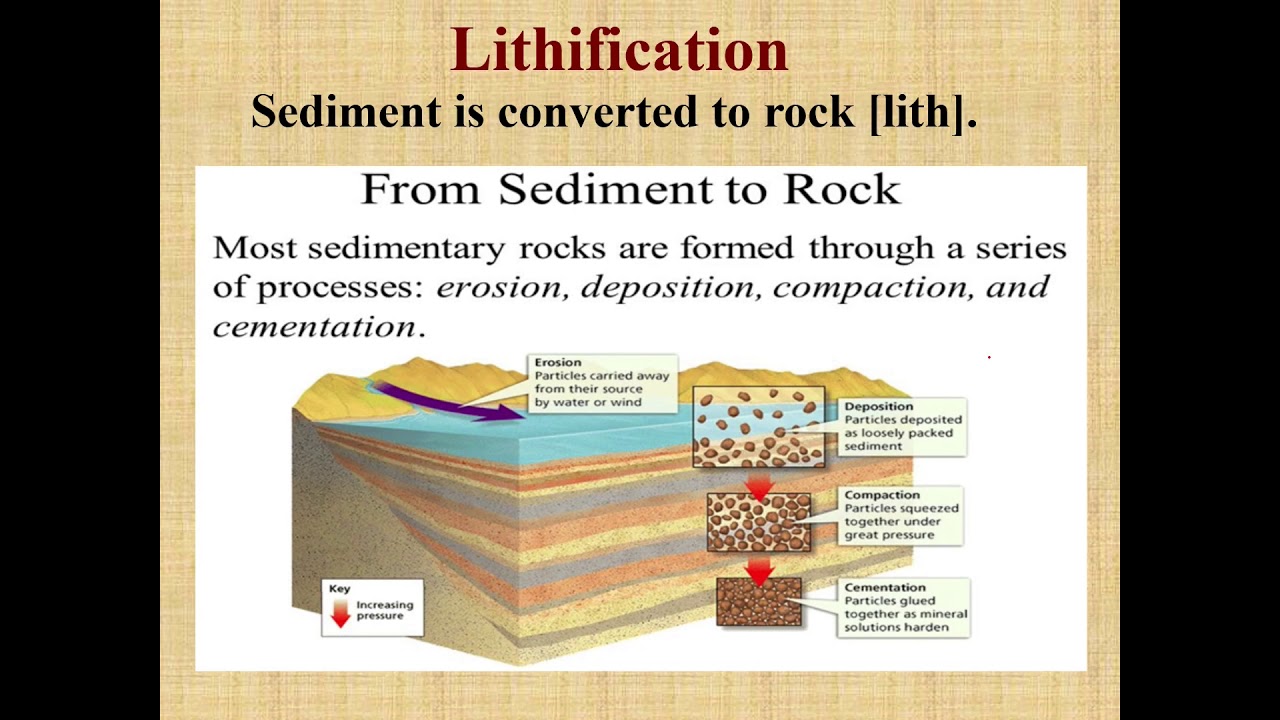
Lithification
Processes that convert loose sediment into solid rock through compaction and cementation.
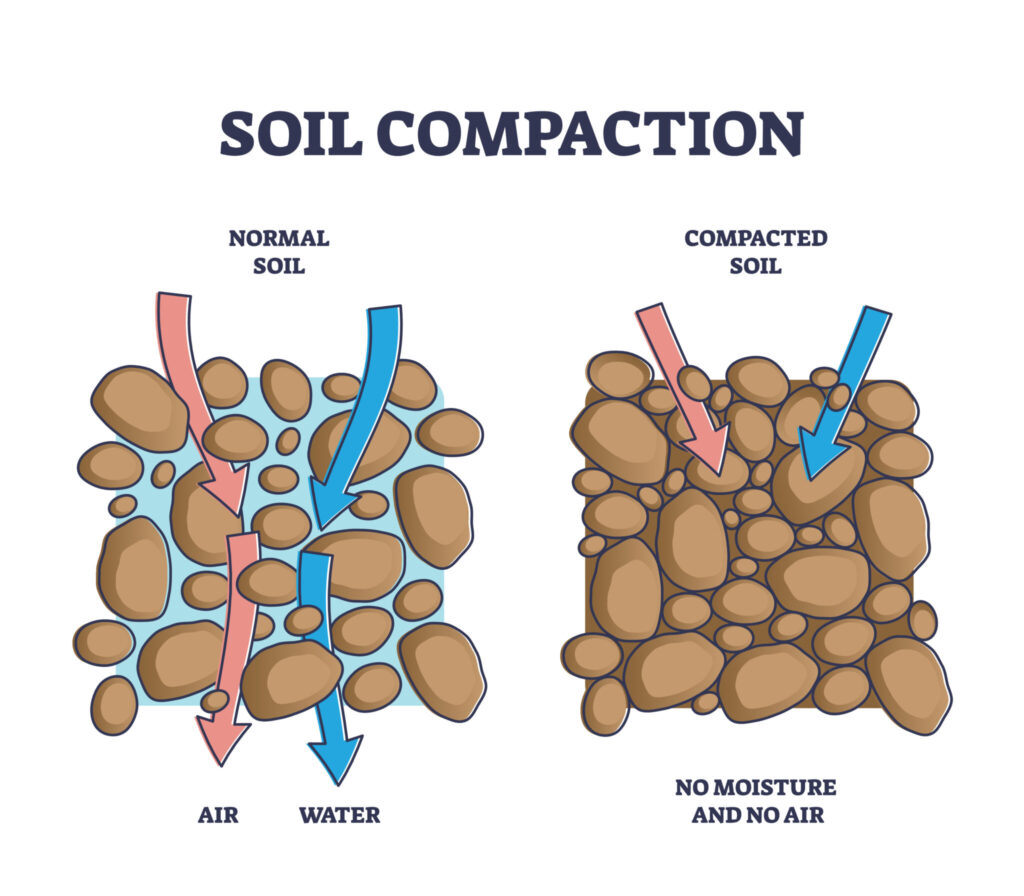
Compaction (Lithification)
Reduction of pore space as sediment grains are pressed closer together by overburden.
Cementation (Lithification)
Precipitation of minerals in pore spaces that binds sediment grains together.
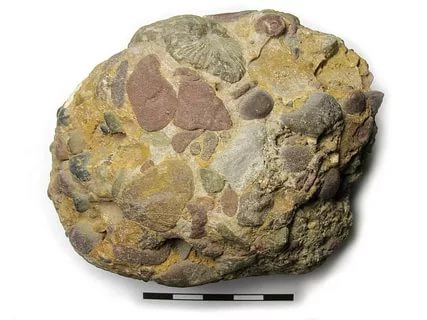
Conglomerate
Rounded Clastic >2 mm.
Poorly sorted, immature
Rock fragments, feldspar, and rounded quartz
Clasts of varied sizes and compositions with rounded gravel-size clasts in a finer matrix.
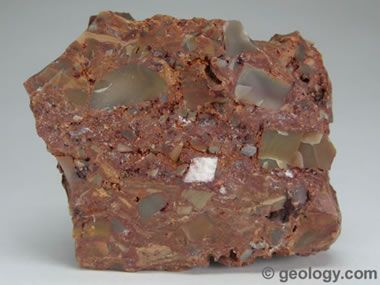
Breccia
Clasts, gravel-sized (>2 mm), angular pieces, It is poorly sorted, immature
it may contain feldspar, quartz, lithic (rock) pieces, and other minerals. mineral cement (such as calcite, silica, and iron oxides) or fine-grained sediments.
Formed close to areas of origin, such as volcanic settings, fault zones, alluvial fans, or landslide deposits.

Arkose
Clastic, over 1/16 mm.
Sub-rounded, poorly sorted. Immature:
Feldspar, quartz. A purple-pink sandstone with around 25% pink feldspar.

Quartz sandstone
Clastic, sand-sized grains (1/16 to 2 mm)
Typically rounded to sub-rounded, well-sorted, mature, with over 90% quartz grains.
There may be tiny concentrations of feldspar or other minerals.
Cement is typically made of silica (quartz), calcite, or iron oxide and is light in color.
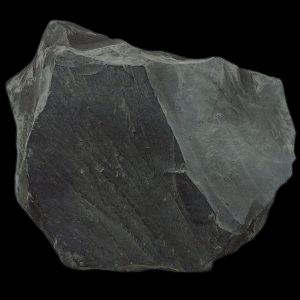
Mudstone
Clastic, clay, and silt-sized grains (<1/16 mm).
Under a microscope, they appear angular to sub-rounded but are too small to see easily.
Well to moderately sorted, mature, with clay minerals (such as kaolinite and illite) and fine quartz silt.
Minor organic material, feldspar, or iron oxide may be present, and it is typically gray, brown, or black.

Shale
Clastic, fissile, clay, and silt-sized grains (< 1/16 mm)
Grains are typically angular to sub-rounded, but too small to see without magnification. Well-organized, mature.
Clay minerals (kaolinite, illite, and smectite) predominate, as does fine quartz.Organic substances, feldspar, and iron oxides may all be present.
Colors vary: gray, black (organic-rich), red, and green.
Relative mineral stability
Resistance of minerals to weathering; quartz is most stable, halite and calcite among the least.

Evaporite
Chemical sedimentary rock formed by evaporation of saline water, producing minerals like halite and gypsum.
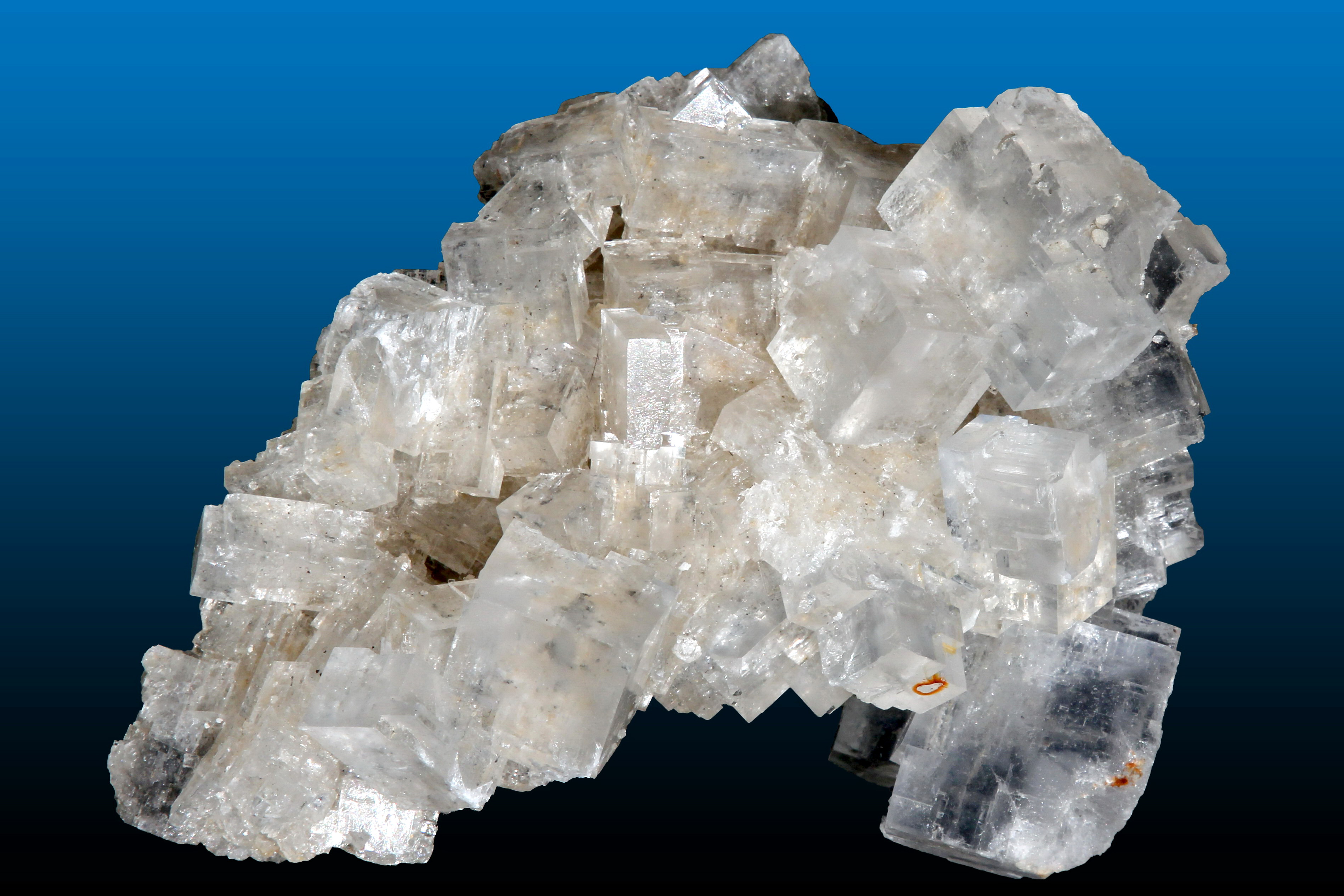
Halite (rock salt)
Sodium chloride mineral precipitated from evaporating seawater or brines.
Gypsum
Calcium sulfate dihydrate mineral that precipitates during strong evaporation of seawater or lakes.
Diagenesis
All physical, chemical, and biological changes that occur to sediment after deposition and before metamorphism to a sedimentary rock.
Metamorphic rock
Rock produced by solid-state alteration of a pre-existing rock (protolith) due to heat (sometimes hot fluid), pressure, and fluids.
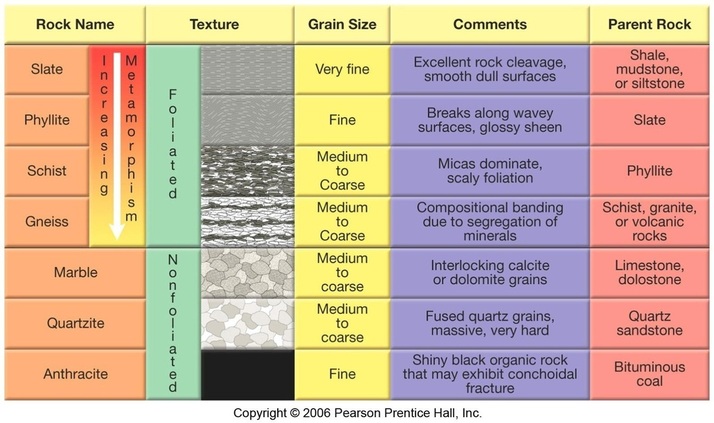
Protolith (parent rock)
Original rock from which a metamorphic rock forms.
Solid-state metamorphism
Metamorphic change that occurs without the rock melting.
Agents of metamorphism
Heat, confining pressure, differential (directed) stress, and chemically active fluids.
Recrystallization
Growth of new mineral grains from older ones in the solid state, often increasing grain size.
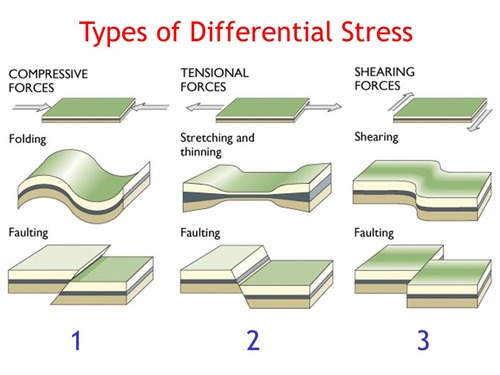
Differential stress
Stress applied unequally in different directions, producing deformation and foliation.
Tension Stress
Type of differential stress that pulls rocks apart, stretching them. Divergent boundaries
Compression Stress
Type of differential stress that squeezes rocks together. Convergent boundaries
Shear Stress
Type of differential stress that causes parts of a rock body to slide past one another. Transfer boundaries

Foliated texture
Planar alignment of mineral grains created by differential stress during metamorphism.
Non-foliated texture
Metamorphic texture lacking a preferred mineral alignment.
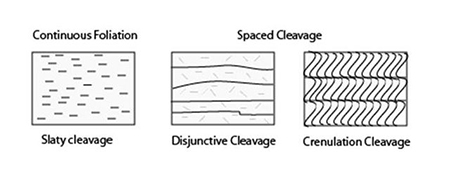
Slaty cleavage
Very fine foliation that allows slate to split into thin, even slabs.
Schistosity
Visible alignment of platy or elongate minerals creating a coarse foliation typical of schist.
Gneissic banding
Alternating light and dark mineral layers in gneiss produced by high-grade metamorphism.
Phyllitic texture
Wavy foliation with silky sheen found in phyllite, intermediate between slate and schist.

Metamorphic grade
Intensity of metamorphism reflected by temperature and pressure conditions; increases from low to high grade.
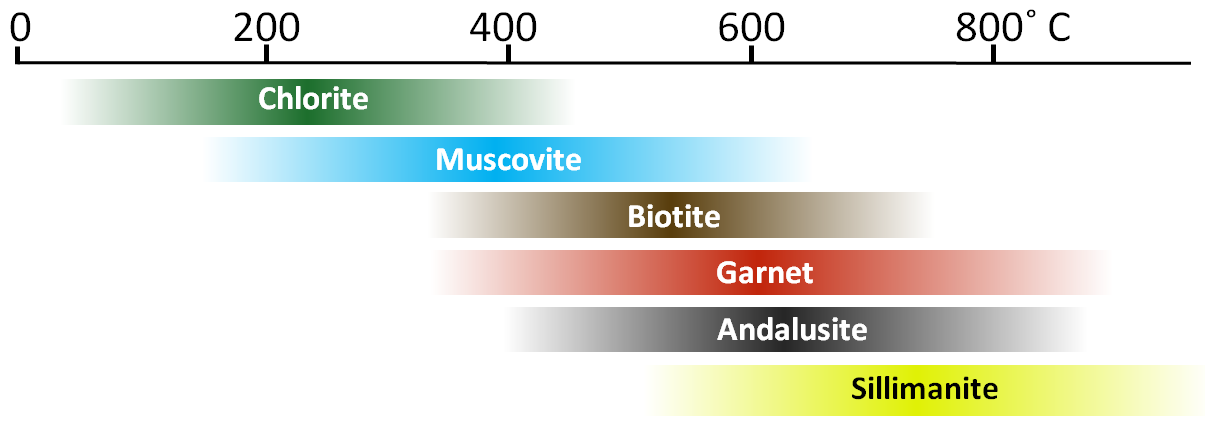
Index mineral
Mineral that forms in a narrow metamorphic range and indicates specific pressure-temperature conditions (e.g., garnet, kyanite).
Polymorphism
Ability of a chemical composition to crystallize in two or more different mineral structures (e.g., kyanite vs. andalusite). Graphite vs diamond
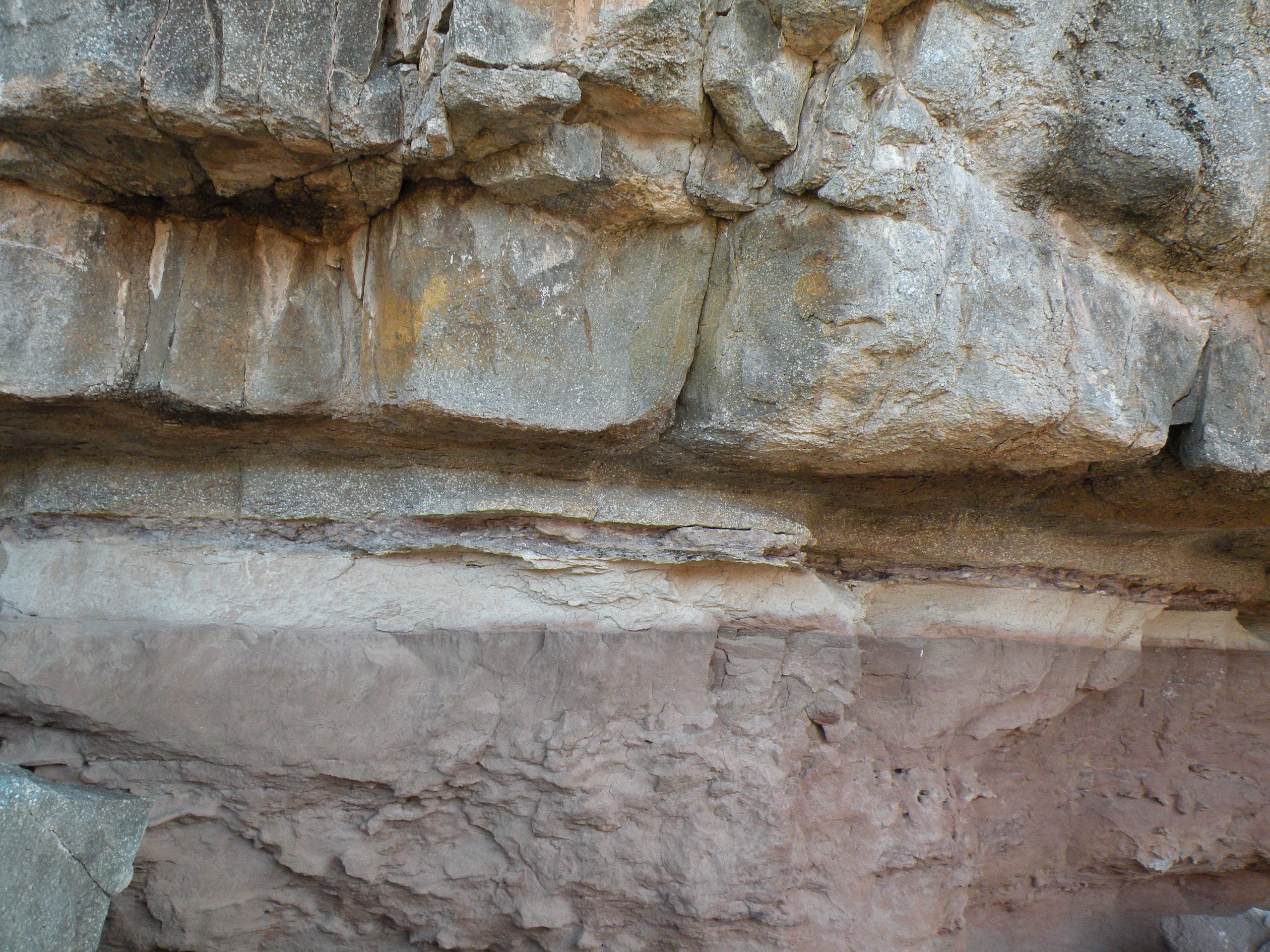
Metamorphic aureole
Halo of contact metamorphism surrounding an igneous intrusion.
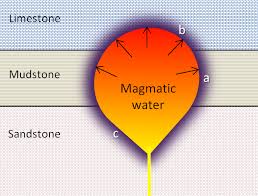
Metasomatism (hydrothermal)
Alteration of rock composition by introduction or removal of elements via hydrothermal fluids.
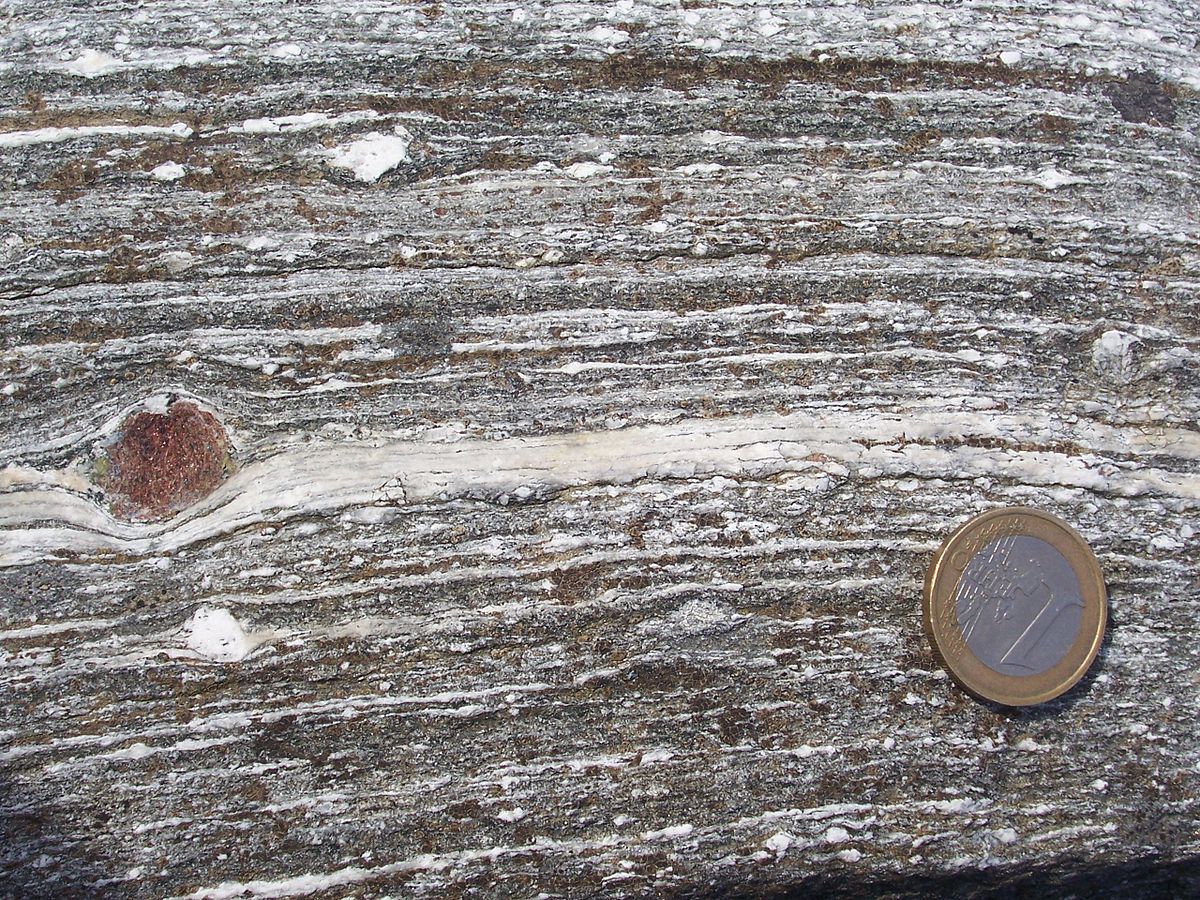
Mylonite
Fine-grained, foliated rock formed by intense shearing along fault zones.
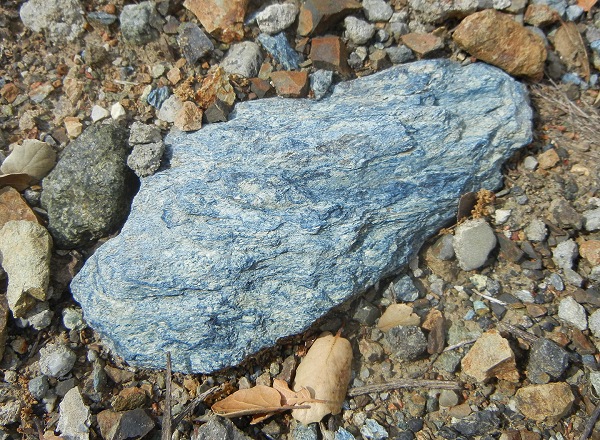
Blueschist
High-pressure, low-temperature metamorphic rock characteristic of subduction zones, containing blue amphibole (glaucophane).
Contact metamorphism
Metamorphism caused primarily by heat from nearby magma intrusion.
Burial metamorphism
Low-grade metamorphism that occurs as sedimentary layers are buried deeply and heated by geothermal gradient.
Hydrothermal metamorphism
Chemical alteration of rock by hot, ion-rich fluids, common at mid-ocean ridges; a form of metasomatism.
Fault-zone metamorphism
Metamorphic alteration along active fault planes due to frictional heating and shearing.
Subduction-zone metamorphism
Metamorphism at convergent margins characterized by high pressure and low temperature, producing blueschist and eclogite.
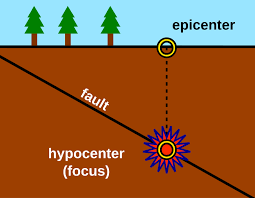
Hypocenter (focus)
Point within Earth where seismic rupture first occurs during an earthquake.
Epicenter
Point on Earth’s surface directly above the hypocenter of an earthquake.
Elastic rebound theory
Concept that rocks store elastic strain and suddenly release it as they rupture, producing earthquakes.
Shallow-focus earthquake
Earthquake with focal depth less than 70 km, common at divergent and transform boundaries. subduction
Intermediate-focus earthquake
Earthquake with focal depth between 70 km and 300 km, typical of subduction zones.
Deep-focus earthquake
Earthquake originating between 300 km and 700 km depth within subducting slabs.
Seismic wave
Vibration that propagates through Earth from an earthquake or explosion.
P-wave (primary wave)
Compressional body wave that travels fastest and passes through solids, liquids, and gases.
S-wave (secondary wave)
Shear body wave that travels slower than P-waves and only through solids.
Surface wave
Seismic wave that travels along Earth’s surface and generally causes the most damage (destructive).
Aftershock
Smaller earthquake following the main shock as crust adjusts to new conditions.
Foreshock
Smaller earthquake that sometimes precedes the main seismic event.
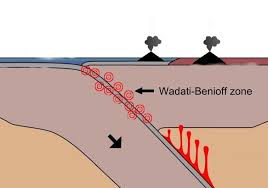
Wadati-Benioff zone
Inclined plane of earthquakes tracing a subducting slab beneath a convergent margin.
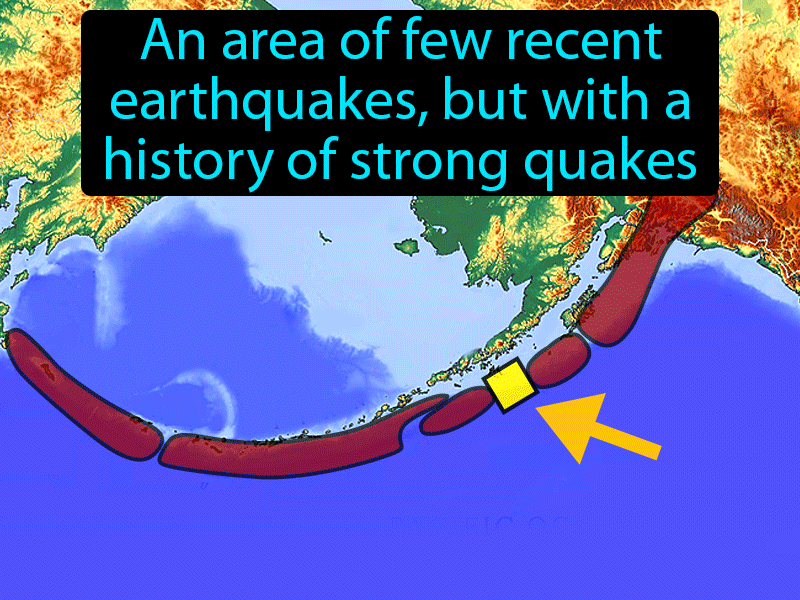
Seismic gap
Segment of an active fault with few recent earthquakes, considered a potential site for future large events.
Earthquake recurrence
The higher the magnitude of earthquake, the longer time it will take for that to recur. The shorter or smaller magnitude earthquake happen very, very often
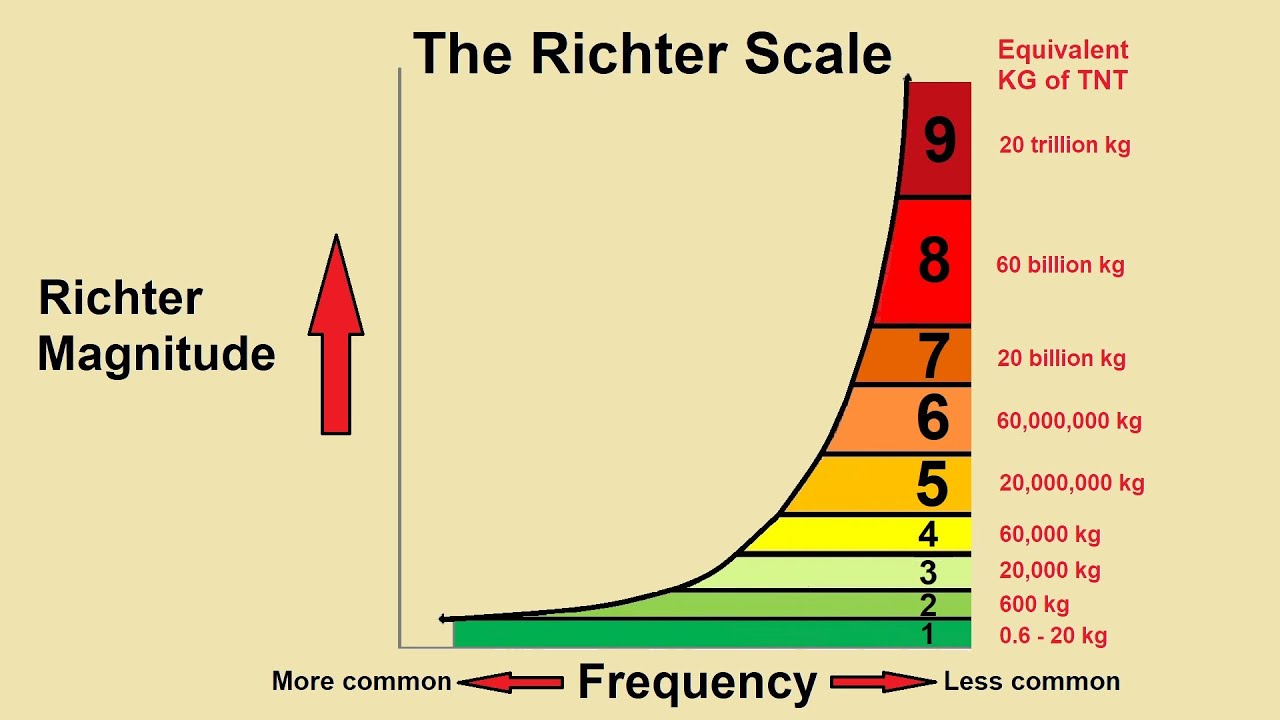
Richter scale
Logarithmic magnitude scale based on the amplitude of seismic waves recorded 100 km from an epicenter. Provides more information about the Earth's layers and is more rooted in geology.
Modified Mercalli Intensity scale
Qualitative scale that ranks earthquake effects on people, structures, and the natural environment. Insurance companies often utilize this.
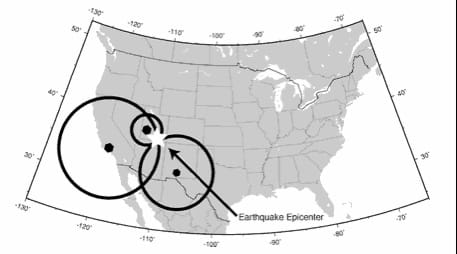
Triangulation
Method of determining an epicenter by intersecting distance circles from at least three seismograph stations.
Horizontal Seismograph
Record sideways movements, typically set up in two perpendicular directions to capture east-west and north-south components.
Vertical Seismograph
record up and down ground movements
Tsunami
Large, potentially destructive sea wave generated mainly by submarine earthquakes, landslides, or volcanic eruptions. From faults
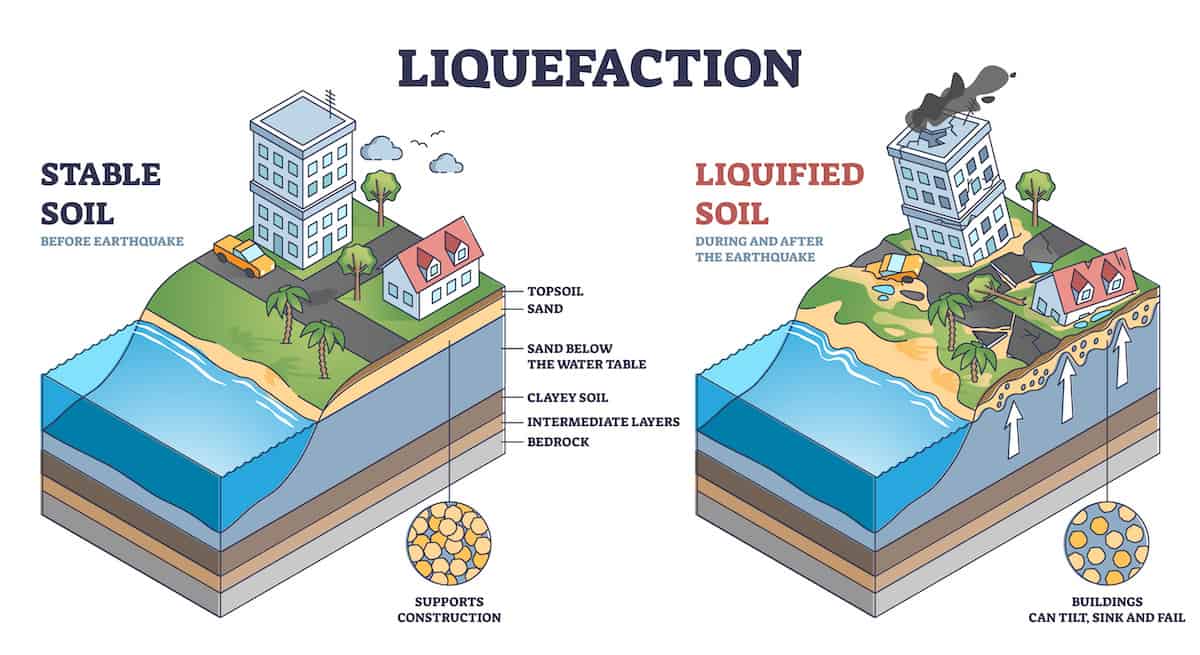
Liquefaction
Loss of strength in water-saturated sediment during shaking, causing it to behave like a fluid.
Plate boundary
Fracture zone where two tectonic plates meet; site of most volcanic and seismic activity.
Global earthquake distribution
Approximately 95 % of earthquakes occur along plate boundaries. Only 5% happens within the plate
Thermal expansion
The tendency of matter to change its shape, area, and volume in response to a change in temperature.
Salt Wedging
Salt crystals growing in cracks and pores of rocks exert pressure, causing the rock to disintegrate
Hydrolysis
is a chemical reaction where water reacts with minerals, leading to their alteration and breakdown.
Oxidation
is a chemical process where minerals react with oxygen, leading to their alteration and often resulting in the formation of oxides.
If you have iron bearing minerals…
they're going to be oxidized.
If you have potassium feldspar...
it's going to go through hydrolysis and give us clay mineral
If you have olivine goes through oxidation…
gives you iron oxide
Chemical Rock
formed through the precipitation of minerals from solution, often containing minerals like calcite or halite.
Biochemical Rock
formed from the accumulation of biological debris, typically containing calcite or silica from shells or skeletons.
Organic Rock
formed from the accumulation of plant or animal remains, often rich in carbon and can include coal.
Shock Metamorphism
Refers to the changes in rocks and minerals caused by the intense pressure and temperature coming from high-velocity impacts, such as meteorite or asteroid crashes.